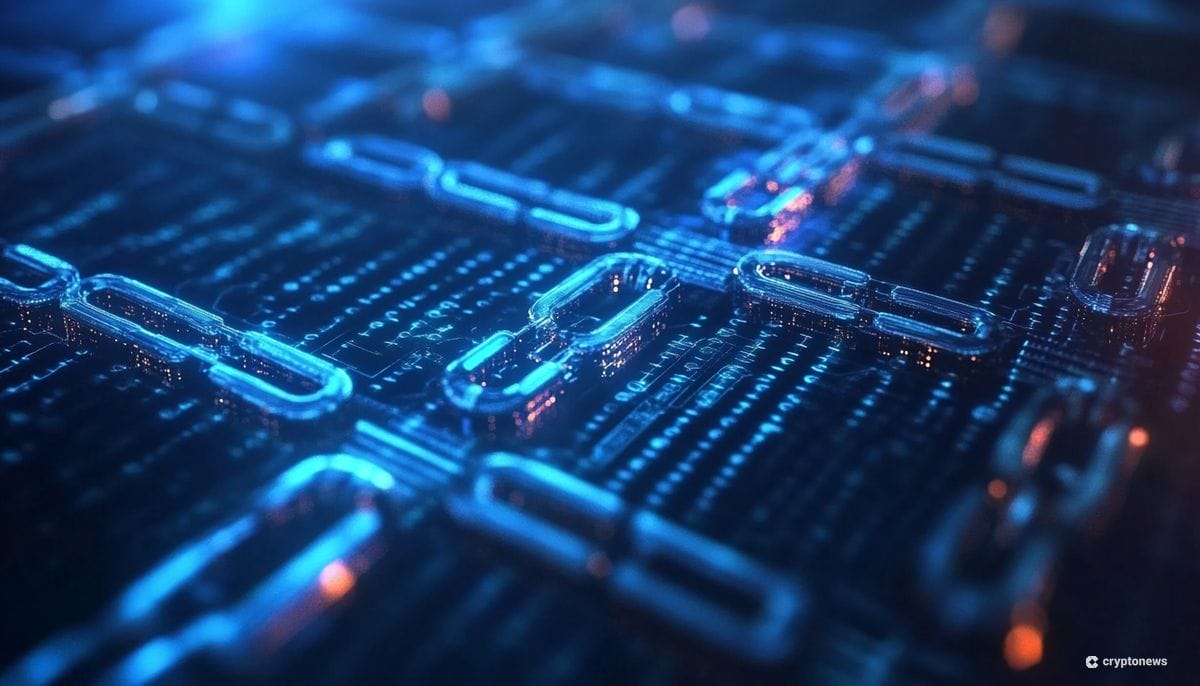Last updated:
 Why Trust Cryptonews
Why Trust Cryptonews

Layer-2 (L2) networks are on the rise, but it remains questionable as to which L2s will be widely used and adopted.
While it’s too soon to make predictions, some L2s have begun incorporating artificial intelligence (AI) to boost scalability, security, and efficiency.
This shouldn’t come as a surprise, though. Recent market insights show that the intersection of AI and blockchain technology is expected to be worth over $2.7 billion by 2031.
Why L2s Are Incorporating AI
While the combination of blockchain and AI is still developing, these two technologies may fine-tune crypto trading strategies, help craft smart contracts and ensure better security features.
Karan Bharadwaj, Founder and CEO of Layer-2 Arithmic, told Cryptonews that AI can help optimize transaction throughput by improving proof generation and verification times. He added that artificial intelligence solutions can manage network congestion through smart resource allocation, which may ensure smooth performance under high demand.
This is important, as L2s are used to enable increased scalability by offloading numerous transactions from the main chain onto a second layer.
AI Used To Detect and Prevent Malicious Transactions
Bharadwaj also remarked that AI can enhance security by detecting anomalies and potential threats before they impact a layer-2 network.
This may very well be the case. Jan Gorzny, Co-founder of Zircuit, told Cryptonews that Zircuit is a zero-knowledge rollup solution that leverages AI for its sequencer security.
“This security feature within our rollup means that our AI-based sequencer monitors the mempool – which is the node’s collection of all of the unconfirmed transactions that it has seen – for malicious transactions to prevent their inclusion into a block,” Gorzny said.
According to Gorzny, the goal behind AI-enabled sequencer level security is to create a safer and more secure L2 that protects dApps and their users from hacks and malicious actors.
“When other L2s are hacked, they have to resort to measures like block reversion or hard forks to secure the chain,” she said. “Zircuit aims to prevent exploits from happening in the first place.”
Gorzny explained that Zircuit uses an AI system to inspect and simulate transactions as they are considered for inclusion on the network.
“The AI determines whether a transaction is malicious by considering the outcomes of the transaction in the context of the current blockchain network,” Gozny mentioned. “When the AI assesses a transaction for malicious behavior, it examines unusual activity within the blockchain.”
For example, Gorzny mentioned that if a transaction withdraws liquidity in a large volume without proper collateral, it may signal a hack. She noted that Zircuit’s AI is trained to recognize such patterns, flagging them as potentially malicious based on historical data and known attack strategies.
Gorzny shared that Zircuit’s system has been trained to recognize over 4.8 billion transactions on more than 20 blockchain networks.
AI Used For Smart Contract Audits and Security
The Numerico L2 blockchain is also incorporating AI to enhance network security. A Numerico spokesperson told Cryptonews that the Numerico ecosystem recently implemented an “AI smart contract audit system.”
“This feature performs audits to identify bugs or vulnerabilities in smart contract code,” the spokesperson said.
They added that AI can analyze vast amounts of data in real-time to optimize network performance and security beyond current capabilities.
“By leveraging AI, blockchain networks gain a competitive edge that will be hard or impossible to compete with,” the spokesperson remarked.
Other AI Use Cases for Layer-2 Solutions
While AI may be well suited for enhancing L2 security, Bharadwaj pointed out that these tools can also refine user experiences through personalized interactions and automation.
“This makes the technology more intuitive and accessible,” he said.
For example, Numerico has a tool called “Calculus AI” that creates personalized trading strategies for users. Numerico’s spokesperson mentioned that an AI development tool allows users with minimal Solidity knowledge to deploy on-chain products and projects across the Numerico ecosystem.
It’s also been reported that Ethernity – a platform that offers licensed non-fungible tokens (NFTs) featuring celebrities – will use AI for its layer-2.
The Ethernity Chain Layer-2 solution will use AI for implementing Digital Rights Management (DRM) controls. This will aim to prevent counterfeit trading, while protecting a creator’s intellectual property.
Challenges Combining AI and Blockchain
While using AI to enhance blockchain efficiencies makes sense, there are a number of challenges that may arise.
For instance, Gorzny noted that primary challenges are performance and accuracy. Yet she mentioned that Zircuit has a strong engineering team dedicated to solving these issues.
“Zircuit’s AI can keep up with the network’s blazingly fast 2-second block time, while also maintaining a false positive rate as low as 0.01%,” Gorzny said.
According to Numerico, one of the biggest challenges of integrating AI with an L2 network is ensuring that the algorithms can handle the scalability demands and security requirements of blockchain technology.
“Additionally, maintaining low latency while processing large amounts of data in real time is critical,” the Spokesperson said. “These challenges can be addressed by optimizing AI models specifically for blockchain use, leveraging advanced L2 scaling solutions, and continuously updating the AI to adapt to new threats and network changes.”
L2s Will Use AI Moving Forward
Challenges aside, Gorzny believes that using AI is more efficient than other approaches like formal proofs of correctness.
“Using our AI-based system, we can evaluate a particular transaction with a particular context, in order to determine if the transaction is malicious. This is a lot easier than trying to prove that there is never going to be a malicious transaction that can exploit a particular smart contract,” she said.
Given this and the other benefits provided by AI, Bharadwaj believes that more L2s will increasingly adopt AI in the future.
“It will allow them to optimize scalability and enhance security, while simultaneously enhancing user experience,” he said.
In turn, Bharadwaj mentioned this will lower the barrier to entry and broaden accessibility.
He added that while it’s interesting to observe L2s utilizing AI, an equally important question to ask is, “how can AI utilize Layer-2s?”
“I think Layer-2 solutions can be potentially used in the future to scale up and decentralize AI networks to meet their heavy computational requirements,” Bharadwaj commented.



















